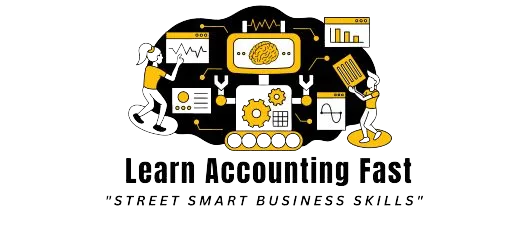20 secrets to Address Inflation's Impact on Your Business
Inflation can significantly impact your business by raising the cost of goods and services, thereby squeezing your profits.
However, by adopting strategic business practices, you can manage and even thrive during times of inflation.
Here’s a detailed guide on how to address inflation's impact on your business, using strategies often utilized by top entrepreneurs.
Understand Your Costs
First, it’s crucial to understand your costs during inflation. Knowing where your money goes helps you identify areas where you can save.
Action Tip:
List all your expenses: Start by listing all your fixed costs (rent, salaries) and variable costs (materials, utilities).
This includes every regular and occasional expense.
Step-by-step: Make a spreadsheet or use accounting software to categorize all expenses. Break them down into monthly, quarterly, and yearly expenses to get a full picture.
Use tracking tools: Utilize tools like QuickBooks or Xero to track your expenses automatically.
Step-by-step: Set up your business accounts in the software. Regularly update your expenses, ensuring all transactions are categorized correctly.
Review monthly: Regularly review your expenses to spot any areas where you can cut unnecessary costs. For instance, look for subscriptions you no longer need or negotiate lower rates for recurring services.
Step-by-step: Schedule a monthly review meeting. Compare actual expenses against your budget to
identify variances. Discuss potential cost-cutting measures with your team.
Adjust Your Pricing Strategy
When costs rise, consider adjusting your prices. This doesn’t mean simply raising prices across the board. Instead, create a pricing strategy for inflation.
Action Tip:
Analyze price sensitivity: Evaluate which products or services are less sensitive to price changes and can tolerate a slight price increase without losing customers.
Step-by-step: Conduct market research or surveys to understand customer sensitivity to price changes. Use tools like SurveyMonkey to gather customer feedback.
Use dynamic pricing models: Implement tools like Prisync to adjust prices based on real-time demand and supply..
Step-by-step: Set up dynamic pricing software to monitor competitors' prices and market demand.
Adjust your pricing rules within the software to react to market changes.
Communicate with customers: Be transparent with your customers about why prices are increasing. Use your website, email newsletters, and social media to explain the reasons and maintain trust.
Step-by-step: Draft a clear, concise message explaining the price changes. Use email marketing tools like Mailchimp to send personalized messages to your customers.
Optimize Your Supply Chain
Efficient supply chain management can help reduce costs and improve profitability during inflation.
Action Tip:
Negotiate with suppliers: Contact your suppliers to negotiate better terms, such as bulk discounts or extended payment terms. Use data to show your value as a customer.
Step-by-step: Prepare a negotiation plan highlighting your order history and future potential. Schedule meetings with suppliers to discuss terms.
Consider local sourcing: Reduce transportation costs and avoid import tariffs by sourcing locally. Evaluate the total cost of ownership, not just the purchase price.
Step-by-step: Identify local suppliers that can meet your needs. Compare their costs and reliability to your current suppliers.
Use supply chain management software: Tools like SAP Ariba or Oracle SCM can help streamline your supply chain operations, providing better visibility and control over your inventory.
Step-by-step: Implement supply chain management software to track orders, inventory levels, and supplier performance. Regularly review reports to identify areas for improvement.

Create Engaging Content
Maintaining a healthy cash flow is vital. Ensure you have enough cash to cover day-to-day operations and unexpected expenses.
Action Tip:
Use cash flow forecasting tools: Tools like Float or Pulse can help predict your cash flow needs and identify potential shortfalls.
Step-by-step: Set up your accounts in the forecasting tool. Input your expected income and expenses to create a cash flow forecast.
Implement credit controls: Set clear terms for payment and follow up promptly on late payments. Consider offering early payment discounts to encourage faster payment.
Step-by-step: Develop a credit policy outlining payment terms and conditions. Use invoicing software like FreshBooks to automate reminders and track payments.
Review cash flow regularly: Schedule weekly or monthly reviews to ensure you’re on track. Adjust your forecasts based on actual performance and changing conditions.
Step-by-step: Create a cash flow statement template. Update it regularly with actual income and expenses to monitor your cash position.
Invest in Technology for business efficiency
Technology can improve efficiency and reduce costs. Automation and digital tools can streamline operations.
Action Tip:
Identify repetitive tasks: List all repetitive tasks in your business operations that can be automated.
Step-by-step: Conduct a workflow analysis to identify tasks that are time-consuming and repetitive. Document these tasks and their processes.
Use automation tools: Implement tools like Zapier to automate workflows, such as data entry and email marketing.
Step-by-step: Set up Zapier to connect your apps and automate workflows. For example, create a Zap to automatically add new email subscribers to your CRM.
Invest in marketing automation: Use HubSpot for marketing automation to save time and improve efficiency. This can help you scale your marketing efforts without adding more staff.
Step-by-step: Set up marketing campaigns in HubSpot. Use workflows to automate email follow-ups
and lead nurturing processes.
Diversify Your Revenue Streams
Relying on a single revenue stream can be risky during inflation. Diversify your income sources to spread risk.
Action Tip:
Explore new products or services: Identify complementary products or services that your current customers might be interested in. Conduct market research to validate demand.
Step-by-step: Use tools like Google Trends to identify trending products and services. Conduct surveys to gauge customer interest.
Consider subscription models: Implement subscription services to create recurring revenue. Platforms like
Chargebee can help manage subscriptions..
Step-by-step: Develop a subscription offering for your products or services. Use Chargebee to set up and manage subscription billing.
Use online platforms: Sell digital products or courses on platforms like Udemy or Teachable.
Step-by-step: Create a digital product or course. Use Udemy or Teachable to publish and promote your offerings.
Improve Employee Productivity
Your team’s productivity directly impacts your bottom line. Motivated and efficient employees can help your business thrive.
Action Tip:
Invest in training: Use platforms like LinkedIn Learning for employee training programs to enhance skills and knowledge.
Step-by-step: Identify skill gaps within your team. Enroll employees in relevant courses on LinkedIn Learning.
Use productivity tools: Manage projects and tasks with tools like Trello, Asana, or Monday.com.
Step-by-step: Set up project boards in Trello or Asana. Assign tasks and deadlines to team members.
Recognize achievements: Regularly recognize and reward employee achievements to boost morale. Implement an employee recognition program to encourage high performance.
Step-by-step: Develop critImageeria for employee recognition. Use platforms like Bonusly to manage and track recognition.

Monitor and Adjust Marketing Efforts
Inflation affects consumer behavior. Adjust your marketing
strategies to stay relevant and attract customers.
Action Tip:
Use analytics tools: Monitor changes in consumer behavior with Google Analytics. Track metrics such as traffic, conversion rates, and customer engagement.
Step-by-step: Set up Google Analytics on your website. Use the data to identify trends and adjust your marketing efforts accordingly.
Focus on cost-effective channels: Prioritize social media and email marketing for cost-effective outreach. Tools like Mailchimp can help manage email campaigns efficiently.
Step-by-step: Create targeted email campaigns in Mailchimp. Use social media management tools like Hootsuite to schedule and analyze posts.
Adjust campaigns: Regularly review and adjust your marketing campaigns based on performance data. A/B testing different strategies can help identify what works best.
Step-by-step: Conduct A/B tests on email subject lines, ad creatives, and landing pages. Analyze the results and optimize your campaigns accordingly.
Strengthen Customer Relationships
Building strong relationships with your customers can lead to loyalty and repeat business, which is crucial during inflation.
Action Tip:
Implement a loyalty program: Use tools like Smile.io to create a customer loyalty program that rewards repeat purchases.
Design a loyalty program: That offers points or discounts for repeat purchases. Use Smile.io to set up and manage the program.
Set up CRM software: Import your customer data into Salesforce or HubSpot. Use these tools to track customer interactions and segment your audience.
Personalize communication: Send personalized messages and offers to your customers to make them feel valued. Use their purchase history and preferences to tailor your marketing efforts.
Step-by-step: Create customer segments based on behavior and purchase history. Develop targeted email campaigns that address the specific needs of each segment.

Improve Inventory Management
Efficient inventory management software can reduce holding costs and improve cash flow.
Action Tip:
Use inventory management software: Track inventory levels with tools like Cin7.
Step-by-step: Set up your inventory in Cin7. Automate reordering processes to maintain optimal stock levels.
Automate reordering: Set up automatic reordering to avoid stockouts using inventory management software.
Step-by-step: Configure reorder points and quantities in your inventory software. Regularly review these settings to ensure they align with current demand.
Regularly review inventory: Conduct regular inventory audits to ensure optimal stock levels. This can help you identify slow-moving items and avoid overstocking.
Step-by-step: Schedule periodic physical inventory counts. Compare your physical inventory to your inventory records and adjust as necessary.
Leverage Economies of Scale
If possible, buy in bulk to take advantage of lower prices. This can help mitigate the effects of inflation.
Action Tip:
Partner with other businesses: Collaborate with other businesses to make bulk purchases and share discounts. This can provide significant savings on high-volume orders.
Step-by-step: Identify businesses with similar needs. Form a purchasing consortium to negotiate bulk discounts with suppliers.
Negotiate with suppliers: Use your increased purchasing power to negotiate better rates. Present your business case and long-term potential to suppliers.
Step-by-step: Prepare data on your purchasing volume and frequency. Schedule meetings with suppliers to discuss bulk purchasing agreements.
Plan purchases strategically: Schedule bulk purchases to align with supplier discounts and promotions. This requires careful planning and coordination with your suppliers.
Step-by-step: Monitor supplier discount schedules and plan your bulk purchases accordingly. Use supply
chain management software to keep track of bulk orders.
Invest in Quality Control
Maintaining high-quality standards can help differentiate your products and justify price increases.
Action Tip:
Implement quality control processes: Use tools like ZenGRC to ensure compliance and quality standards. Document your processes and regularly review them.
Step-by-step: Develop a quality control checklist. Train your team on quality standards and use ZenGRC to track compliance.
Train employees: Regularly train your staff on quality control procedures. Use online training modules or workshops to keep everyone up-to-date.
Step-by-step: Schedule regular training sessions. Use e-learning platforms to provide ongoing education on quality control.
Monitor feedback: Collect and analyze customer feedback to continuously improve quality. Use surveys and feedback forms to gather insights from your customers.
Step-by-step: Implement a feedback system using tools like SurveyMonkey. Analyze feedback and make necessary adjustments to your quality control processes.
Hedge Against Inflation
Hedging can protect your business from the adverse effects of inflation. This involves using financial instruments to offset potential losses.
Action Tip:
Consult with a financial advisor: Explore hedging options like futures contracts or inflation-linked bonds. A financial advisor can provide tailored advice based on your business needs.
Step-by-step: Schedule a consultation with a financial advisor. Discuss your inflation concerns and explore suitable hedging strategies.
Use hedging tools: Platforms like E*TRADE offer tools for hedging. Educate yourself on how these tools work and how they can benefit your business.
Step-by-step: Open an account with a hedging platform. Use the available tools to create and manage your hedging strategies.
Monitor hedging performance: Regularly review your hedging strategy to ensure it’s effective. Adjust your approach based on market conditions and performance data..
Step-by-step: Set up regular review meetings with your financial advisor. Use performance data to assess the effectiveness of your hedging strategies and make adjustments as needed.
Optimize Operational Efficiency
Streamlining operations can reduce costs and improve productivity, helping to offset inflationary pressures.
Action Tip:
Conduct operational audits: Regularly review your operations to identify inefficiencies. Use checklists and benchmarks to assess performance.
Step-by-step: Schedule and conduct regular operational audits. Document findings and develop an action plan to address inefficiencies.
Implement lean management techniques: Use lean techniques like 5S, Kaizen, and Six Sigma to eliminate waste and improve efficiency. These methodologies focus on continuous improvement.
Step-by-step: Train your team on lean management techniques. Use lean tools to identify and eliminate waste in your processes.
Use project management tools: Tools like Monday.com, Asana, or Wrike can help streamline operations and improve collaboration.
Step-by-step: Set up project management tools to organize and manage your projects. Assign tasks, set deadlines, andtrack progress.
Focus on Core Competencies
During inflation, it’s crucial to focus on what your business does best. This ensures you allocate resources efficiently.
Action Tip:
Identify core competencies: Determine the key areas that drive the most value for your business. Conduct a SWOT analysis to identify strengths and weaknesses.
Step-by-step: Conduct a SWOT analysis with your team. Identify core competencies and focus your resources on these areas.
Prioritize resources: Allocate more resources to these core areas to maximize their potential. This may involve shifting budgets and personnel.
Step-by-step: Develop a resource allocation plan. Reallocate budgets and personnel to support your core competencies.
Outsource non-core activities: Consider outsourcing non-core tasks to specialized firms. Platforms like Upwork or Fiverr can help you find professionals for tasks like graphic design, customer support, and IT services.
Step-by-step: Identify non-core activities that can be outsourced. Use platforms like Upwork or Fiverr to find and hire qualified professionals.

Build a Financial Cushion
Having a financial cushion can help your business weather inflation-related challenges without significant disruption.
Action Tip:
Allocate profits to a reserve fund: Set aside a portion of your profits each month to build up your reserve fund. Treat this as a non-negotiable expense.
Step-by-step: Establish a reserve fund in your accounting system. Allocate a fixed percentage of your monthly profits to this fund.
Use high-yield savings accounts: Grow your financial cushion with high-yield savings accounts from banks like Ally Bank or Capital One.
Step-by-step: Open a high-yield savings account. Set up automatic transfers from your main business account to your reserve fund.
Regularly review your reserves: Ensure your financial cushion is sufficient to cover unexpected expenses. Aim for at least three to six months of operating expenses in your reserve.
Step-by-step: Schedule regular reviews of your reserve fund. Adjust your savings goals based on changes in your business needs and expenses.
Monitor Economic Indicators During Inflation
Stay informed about economic trends and indicators. This helps you anticipate changes and adjust your strategies accordingly.
Action Tip:
Subscribe to financial news sources: Stay updated with sources like Bloomberg or Reuters. Set up news alerts for relevant topics.
Step-by-step: Create accounts with financial news sources. Customize your news alerts to receive updates on key economic indicators.
Regularly review economic reports: Pay attention to reports on inflation, interest rates, and other economic factors that can impact your business. Analyze how these factors may affect your costs and revenues.
Step-by-step: Schedule time to review economic reports. Discuss the implications of these reports with your team and adjust your strategies accordingly.
Adjust strategies based on trends: Use this information to make informed business decisions. For example, if inflation is expected to rise, consider adjusting your pricing or inventory strategies accordingly.
Step-by-step: Develop a strategic response plan based on economic trends. Implement changes to your pricing, inventory, and other key business areas as needed.
Foster Innovation
Encouraging innovation can help your business adapt to changing market conditions and stay competitive.
Action Tip:
Create an innovation team: Form a team dedicated to generating and evaluating new ideas. Include members from different departments to get diverse perspectives.
Step-by-step: Identify employees with innovative mindsets and skills. Form a cross-functional innovation team and set regular meeting schedules..
Hold brainstorming sessions: Schedule regular sessions to encourage creative thinking. Use techniques like mind mapping or the SCAMPER method to generate ideas.
Step-by-step: Organize brainstorming sessions. Provide tools and resources to facilitate creative
thinking and idea generation.
Incentivize innovation: Offer rewards or recognition for successful innovations. This could be in the form of bonuses, public recognition, or other incentives.
Step-by-step: Develop an innovation incentive program. Set criteria for rewarding innovative ideas and communicate these to your team.
Enhance Financial Literacy
Improving your financial literacy and that of your team can lead to better financial decision-making.
Action Tip:
Offer financial education programs: Use online platforms like Coursera, edX, or LinkedIn Learning for courses on finance and economics.Encourage employees to take relevant courses.
Step-by-step: Identify relevant financial education courses. Enroll employees in these courses and track their progress.
Encourage continuous learning: Provide access to books, webinars, and other resources on financial management. Consider creating a company library with relevant materials.
Step-by-step: Curate a list of recommended financial resources. Organize book clubs or discussion groups to encourage continuous learning.
Regularly review financial performance: Use what you learn to analyze your financial reports and make informed decisions. Hold monthly meetings to discuss financial performance and strategies.
Step-by-step: Schedule regular financial review meetings. Prepare and present financial reports, and use these meetings to discuss and implement improvements.
Seek Professional Advice
Consulting with financial experts can provide you with insights and strategies tailored to your business needs.
Action Tip:
Hire a business consultant or financial advisor: Find qualified professionals on platforms like Upwork or Fiverr.
Look for advisors with experience in your industry.
Step-by-step: Research and select financial advisors based on their expertise and reviews. Schedule consultations to discuss your business needs.
Schedule regular consultations: Meet with your advisor regularly to review your financial strategy. This could be monthly, quarterly, or as needed.
Step-by-step: Develop a schedule for regular consultations. Prepare financial documents and questions in advance to maximize the benefits of these meetings.
Implement expert recommendations: Use their insights to make strategic adjustments to your business operations.
Follow up on their advice and measure the results..
Step-by-step: Create an action plan based on expert recommendations. Track the implementation of these recommendations and assess their impact on your business.
Summary
Inflation can pose significant challenges to your business, but by implementing these business strategic for inflation, you can mitigate its impact and continue to grow.
Understand your costs, adjust your pricing, and optimize your supply chain.
Focus on cash flow management, invest in technology, and diversify your revenue streams.
Enhance employee productivity, monitor marketing efforts, and strengthen customer relationships.
Improve inventory management, leverage economies of scale, and invest in quality control.
Hedge against inflation, optimize operations, and focus on core competencies.
Build a financial cushion, monitor economic indicators, foster innovation, enhance financial literacy, and seek professional advice.
By following these detailed action steps, you can navigate the challenges of inflation and build a resilient, profitable business. Start today and ensure your business thrives in 2024 and beyond.
Be the greatest you can be…
Join us, click the link below for short, sharp, simple video courses that give you confidence and street-smart business skills to succeed.
Latest Posts
The Six Laws of
Wealth Creation
The Six Laws of Wealth Creation. These timeless actions work in 2025’s rapid-change environment and give you calm, repeatable steps to grow money.....
How to Read Business
Financial Reports
A Story of Business Secrets Hidden in Reports
Sarah sat in her office staring at a thick folder of financial reports. Sales, costs, cash flow....
The Millionaire
Mind in Action
Timeless Wealth, Flow, and Power from Robert Kiyosaki,Frank Kern, Tony Robbins
and Open Ai......
Why Cost Control Is the Forgotten Key to Profitability
Most entrepreneurs chase sales growth like it’s the only thing that matters.They spend thousands on ads, new products, and fa ncy offices.....
Master Prompts For
Financial Analysis
The Complete Small Business Guide to Financial Analysis: Formulas, Examples, and Tips.These are super-powerful questions you can ask an AI to help..
How To Solve Any Business
Problem With Ai
AI can help you solve all of these faster, smarter, and more affordably, if you know how. This guide will show you exactly how to do that.........
Disclaimer: The content shared on this blog and in these videos is for informational and educational purposes only. Despite my 30 years of experience as a business owner, I am not a certified financial advisor, accountant, or legal professional. The insights and tips shared are based on personal experiences and should not be taken as professional financial or legal advice. For financial, legal, or professional advice, please consult with a certified professional in the respective field. I disclaim any liability or responsibility for actions taken based on any information found in this blog or these videos.
Copyright Learn Accounting Fast - All Rights Reserved 2025










Facebook
Instagram
X
LinkedIn
Youtube